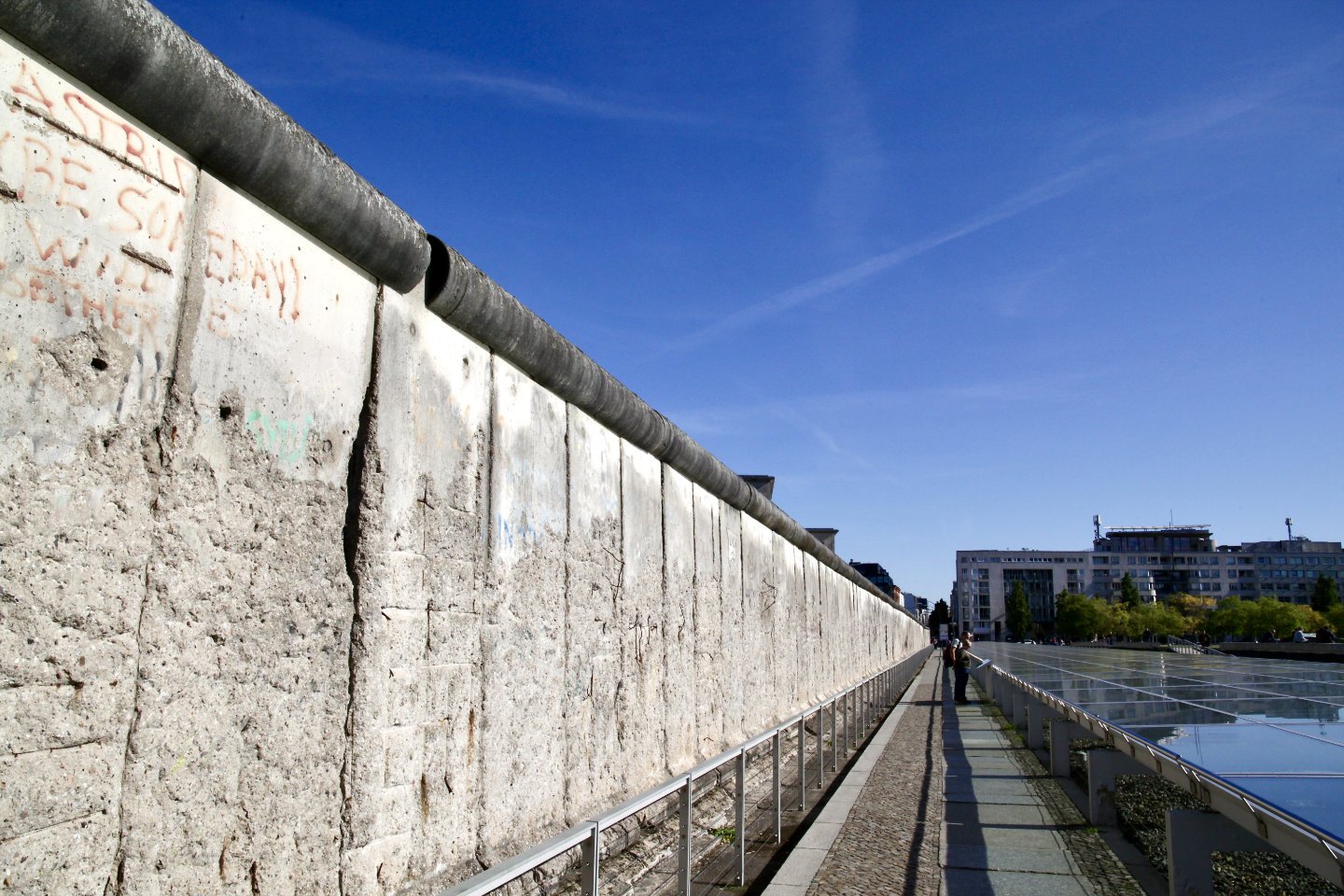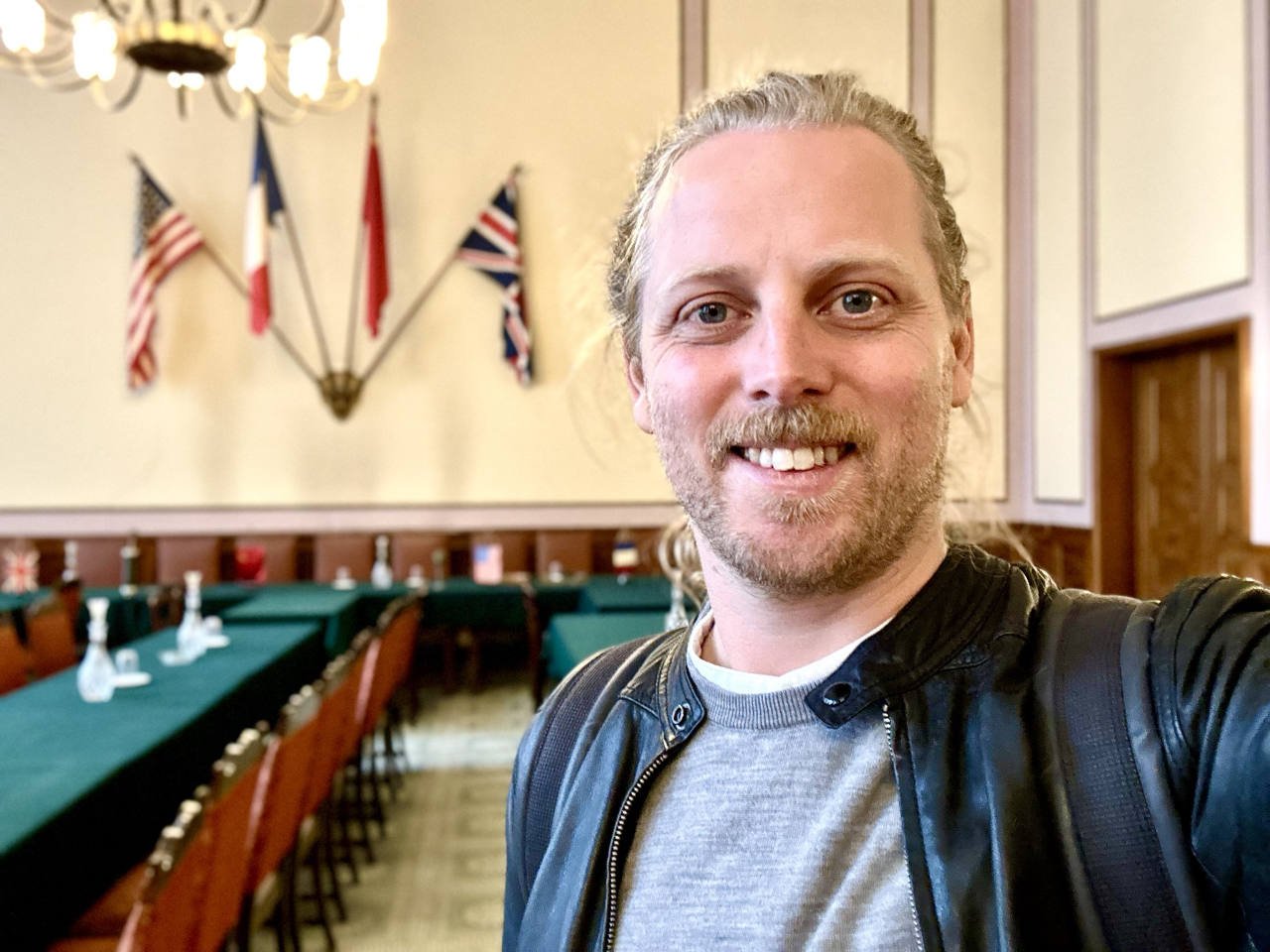Berlin in Three Great Museums: The Rise & Fall of Fascism and Communism
Berlin has so many brilliant free museums. I’ve picked three for you here that you can do in chronological order, taking you from the terrifying days of the 1930s and World War Two Berlin, through the Allied occupation, and up to the collapse of Communism at the end of the 1980s.
It’s possible to visit all three of these free Berlin museums in one day, but you can easily spread them out over your entire trip. They’re really not close to each other, but they’re all worth the journey. Let’s go!
You can see one of the few remaining original pieces of the Berlin Wall next to the Topography of Terror Museum in central berlin
1. Learn about Hitler’s chaotic government at the Topography of Terror Museum
The Topography of Terror is one of Berlin’s most popular museums. Located slap bang in the centre of town, next to Checkpoint Charlie. The museum is built where the SS and Gestapo headquarters used to stand.
the Topography of Terror is a free museum that charts the chaotic reality of Hitler’s Nazi government. There’s a common misconception that the Nazis were efficient. I’d argue instead that they were simply ruthless. Hitler’s goal was to keep those under him fighting one another so that they weren’t busy challenging him. Discover all this and more at the Topography of Terror.
The very room where Keitel signed the capitulation, bringing WWII in Europe to an end
2. See exactly where and how WWII came to an end at the Karlshorst Museum
Germany signed the capitulation at the end of World War Two in a captured Nazi pioneer training college mess hall in the East of Berlin on the night of the 8th of May, 1945. The exhibition is about the war in the East, between the Soviet Union and Nazi Germany, which began with Operation Barbarossa: the Nazi invasion. Germany fought all the way to the edge of Moscow before being beaten back to the centre of Berlin. This museum is especially interesting for Westerners (like me) that have been brought up thinking only of Western countries at war in WWII, forgetting the massive sacrifice made by the people of the Soviet Union.
A Hastings TG 503. One of the few surviving planes from the Berlin Airlift
3. Visit the original Checkpoint Charlie at the Allied Museum
As World War Two gave way to the Cold War, Berlin and Germany came to be occupied by the four allied powers, France, Great Britain, the Soviet Union, and the United States. Relations between East and West fell apart shortly after WWII was over. By 1949 East and West Germany had become separate countries, and by 1961 Berlin was cut off by the Berlin Wall. What was life like in West Berlin? What did the Western allies consider their mission? Just why did they hold on to West Berlin anyway? Find out in the Allied Museum - including an excellent exhibition on the Berlin Airlift.
Fun fact: The Original Checkpoint Charlie(s) from the ‘60s and ‘80s were brought here. The one in the middle of town is a fake!













